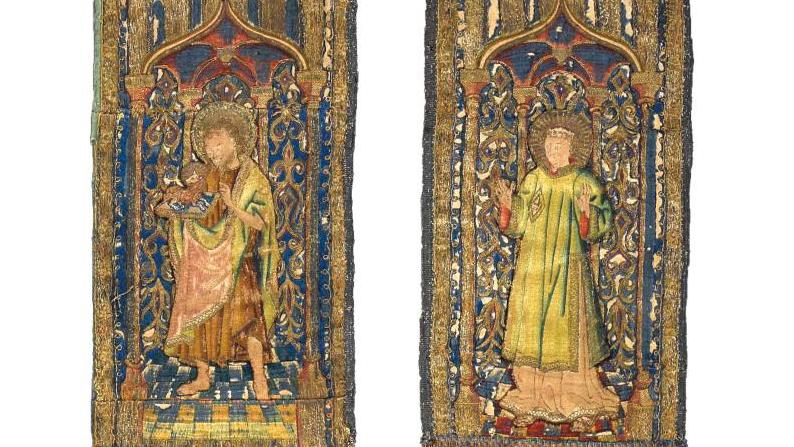Eastern embroidery began having an influence on the West around the year 1000. The precious art form soon rivalled painting, goldsmithing and enamelwork.
Last quarter of the 15th century. Embroidered orfroi bands, 93 x 17/36.6 x 6.6 in and 94 x 13 cm/37 x 5.11in. Lyon, September 26, 2019. De Baecque et Associés OVV. Mr. Maraval-Hutin. Result: €3,000
Silk, gold and silver embroidery reached the gates of Europe along trade routes. Muslim workshops in Sicily and southern Spain were crafting lavish pieces for the court (tiraz) by the ninth century that attracted Christian patrons despite, or perhaps even because of, their Arabic texts and patterns. One example is the chasuble of Saint Thomas Becket in the Diocesan Museum of Fermo Cathedral (Le Marche, Italy) embroidered with Islamic princely scenes and a blessing invoking Allah. It came out of the Almería workshops when they reached their peak in the early 12th century. Yet, in the West embroidery already existed on a wide variety of materials from wool to leather, varying in quality and materials depending on the means. The 11th-century Bayeux Tapestry is the most famous…
com.dsi.gazette.Article : 47762
This article is for subscribers only
You still have 85% left to read.
